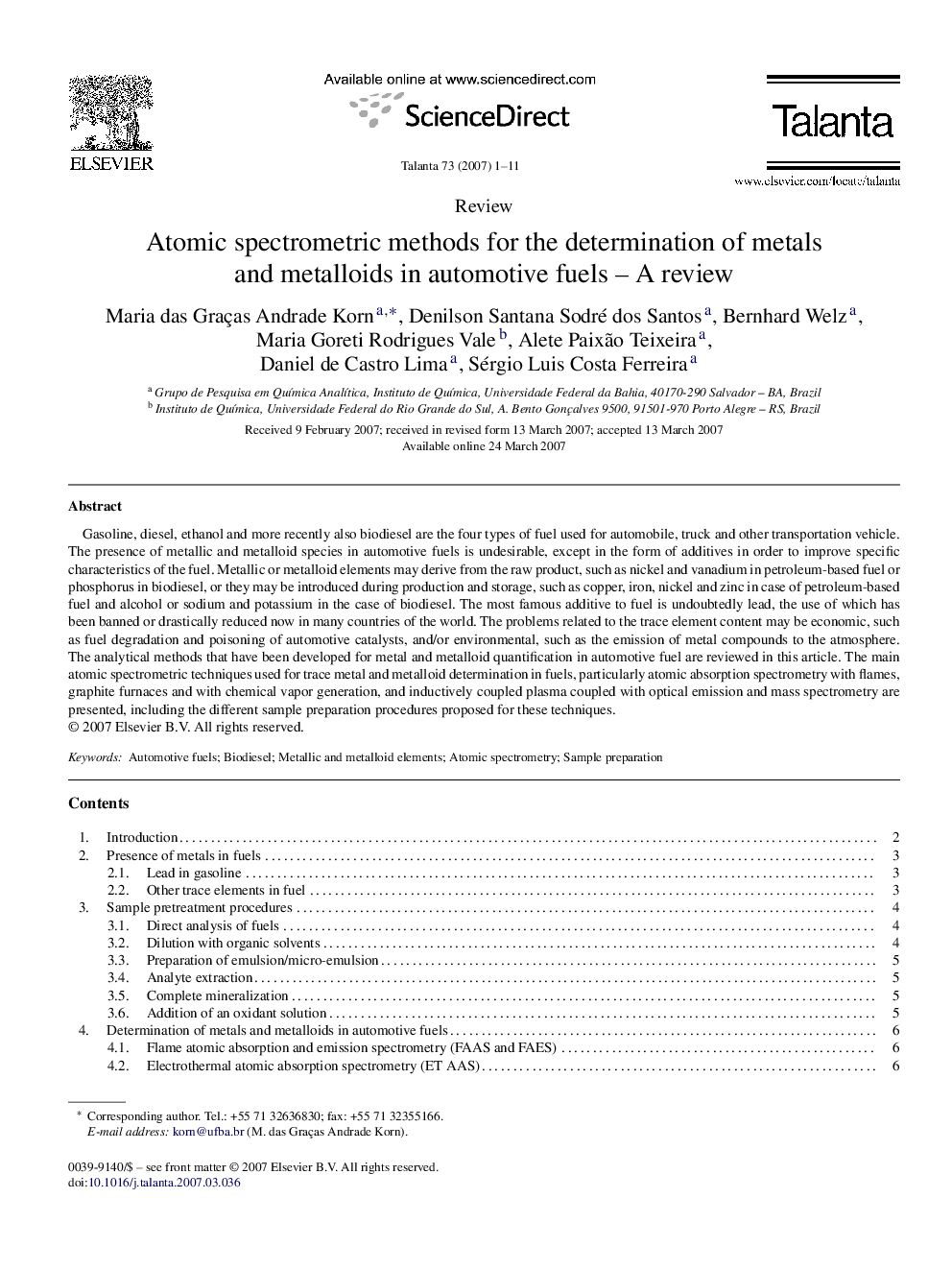| Article ID | Journal | Published Year | Pages | File Type |
|---|---|---|---|---|
| 1244847 | Talanta | 2007 | 11 Pages |
Gasoline, diesel, ethanol and more recently also biodiesel are the four types of fuel used for automobile, truck and other transportation vehicle. The presence of metallic and metalloid species in automotive fuels is undesirable, except in the form of additives in order to improve specific characteristics of the fuel. Metallic or metalloid elements may derive from the raw product, such as nickel and vanadium in petroleum-based fuel or phosphorus in biodiesel, or they may be introduced during production and storage, such as copper, iron, nickel and zinc in case of petroleum-based fuel and alcohol or sodium and potassium in the case of biodiesel. The most famous additive to fuel is undoubtedly lead, the use of which has been banned or drastically reduced now in many countries of the world. The problems related to the trace element content may be economic, such as fuel degradation and poisoning of automotive catalysts, and/or environmental, such as the emission of metal compounds to the atmosphere. The analytical methods that have been developed for metal and metalloid quantification in automotive fuel are reviewed in this article. The main atomic spectrometric techniques used for trace metal and metalloid determination in fuels, particularly atomic absorption spectrometry with flames, graphite furnaces and with chemical vapor generation, and inductively coupled plasma coupled with optical emission and mass spectrometry are presented, including the different sample preparation procedures proposed for these techniques.
